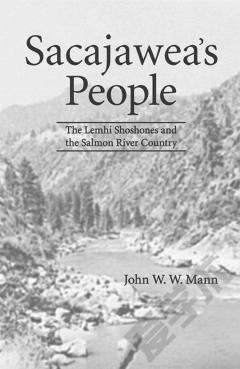Sacajawea's People
On October 20, 2001, a crowd gathered just east of Salmon, Idaho, to dedicate the site of the Sacajawea Interpretive, Cultural, and Education Center, in preparation for the Lewis and Clark Bicentennial. In a bitter instance of irony, the American Indian peoples conducting the ceremony dedicating the land to the tribe, the city of Salmon, and the nation-the Lemhi Shoshones, Sacajawea's own people-had been removed from their homeland nearly a hundred years earlier and had yet to regain official federal recognition as a tribe. John W. W. Mann's book at long last tells the remarkable and inspiring story of the Lemhi Shoshones, from their distant beginning to their present struggles. Mann offers an absorbing and richly detailed look at the life of Sacajawea's people before their first contact with non-Natives, their encounter with the Lewis and Clark Expedition in the early nineteenth century, and their subsequent confinement to a reservation in northern Idaho near the town of Salmon. He follows the Lemhis from the liquidation of their reservation in 1907 to their forced union with the Shoshone-Bannock tribes of the Fort Hall Reservation to the south. He describes how for the past century, surrounded by more populous and powerful Native tribes, the Lemhis have fought to preserve their political, economic, and cultural integrity. His compelling and informative account should help to bring Sacajawea's people out of the long shadow of history and restore them to their rightful place in the American story.
{{comment.content}}








 京公网安备 11010802027623号
京公网安备 11010802027623号